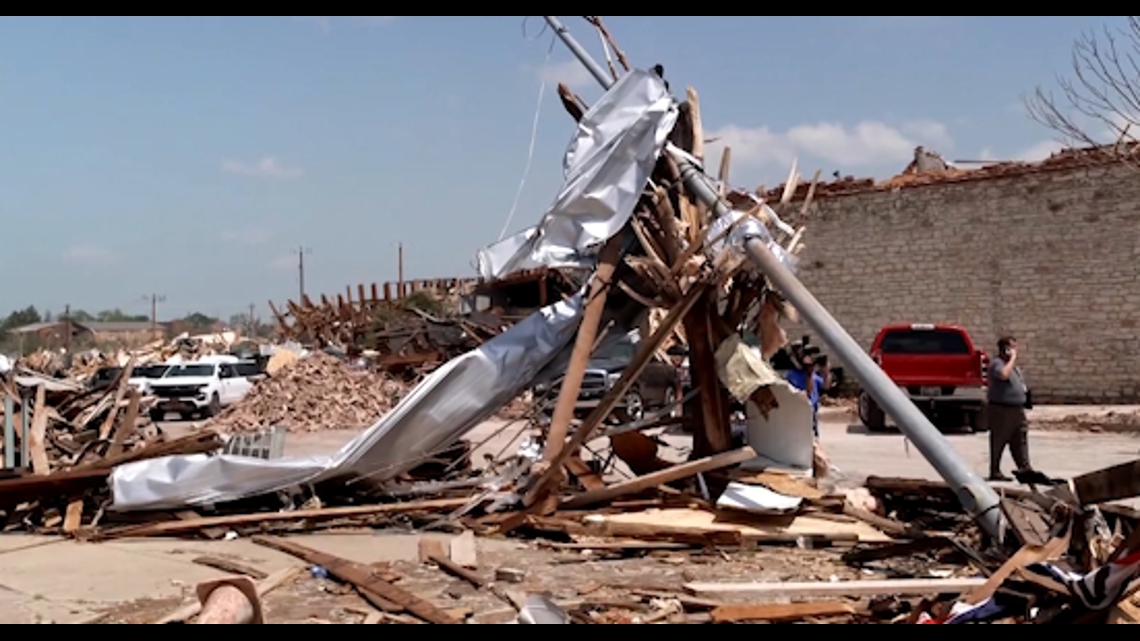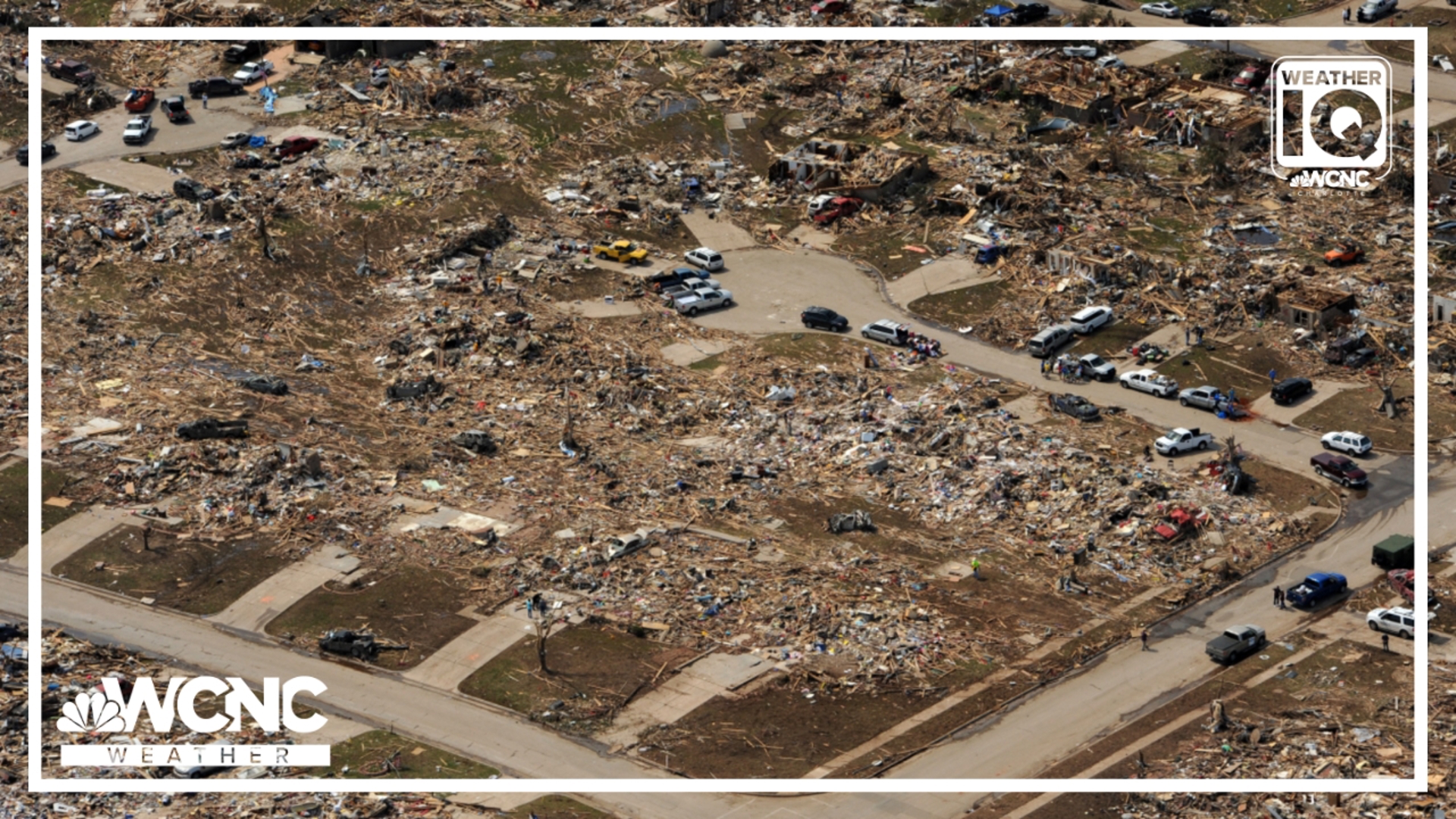CHARLOTTE, N.C. — The United States on average has over 1.200 tornadoes every year.
Based on its damage, each tornado is graded on a tornado scale called the Enhanced Fujita Scale. The scale ranges from the weakest tornadoes at EF0 to the strongest tornadoes at EF5.
What is the Enhanced Fujita Scale?
The Enhanced Fujita scale is fairly new. It upgraded the Fujita Scale in 2007. The new scale, often referred to simply as the EF Scale, assesses damage and assigns a specific wind speed based on the extent of that damage.
When there is a suspected tornado, storm surveyors from the National Weather Service will first decipher if the damage from a storm was indeed a tornado. Storm surveyors are like severe weather detectives. Tree damage is frequently one of their biggest clues.
Trees that fall in different directions are a common sign storm damage was caused by a tornado. When trees fall in the same direction, this is typically a sign of straight-line winds from a thunderstorm.
RAISE YOUR WEATHER IQ: Wind damage from severe weather
Once a storm surveyor deems the damage was from a tornado, the inner workings of the EF Scale has 28 damage indicators that are broken down into degrees of damage. These indicators help officials estimate the wind speed that could have produced that damage. The National Weather Service uses those findings to determine the strength of the tornado on the EF Scale.
EF0: Winds speeds 65-85 mph
Believe it or not, these tornadoes produce only minor damage. EF0 tornadoes typically create lots of broken limbs but very little structural damage. Typically structural damage is limited to a bent gutter or a few damaged roof singles. Isolated uprooted trees are possible.
EF1: Winds 86-110 mph
When a storm surveyor is reviewing the storm damage, a snapped tree typically means minimum winds of 93 mph. An EF1 will have multiple trees down. More structural damage is seen to homes than compared to an EF0. An EF1 tornado can even roll over mobile homes. Warehouses sometimes lose their roofs at winds over 100 mph. A strong EF1 can even flip cars.
EF2: Winds 111-135 mph
An EF2 is the basis for a strong tornado.
When trees look like a lawnmower cut them in half, it is a minimum of EF2 damage. Garage doors and exterior doors are blown off. Entire houses can shift off their foundation. Debris is everywhere. Mobile homes are blown away and small barns are often destroyed. EF2 tornadoes can also throw a vehicle.


EF3: Winds 136-165 mph
At this level, homes can be destroyed with roofs removed and exterior walls collapsed. Large sections of warehouses could see total destruction. This was seen in Rocky Mount, North Carolina in July 2023 when an EF3 tornado with peak winds of 150 mph hit a Pfizer plant.


EF4: Winds 166-200 mph
At this strength, everything is gone.
Instead of a pile of rubble left behind from an EF3 tornado, an EF4 tornado will scatter the debris miles away. Retail buildings are destroyed. Cars are flown far from where they are parked. A brick structure is the safest from a tornado but are often no match for a direct hit from an EF4.


EF5 Winds over 200 mph
The damage from an EF5 tornado is incredible.
These rare monsters leave nothing behind. An EF5 tornado can wipe towns off the map. The first ever EF5 happened when the EF Scale was adopted in 2007. This storm leveled 95% of Greensburg, Kansas.


And in rare cases are strong enough to rip the pavement off the road.
In conclusion
An EF5 produces over 2,000 times the damage compared to an EF0.
The limitation:
The Enhanced Fujita scale is a damage scale. If a tornado does not produce damage, it will be given the determination of an "EF Unknown."
Contact Chris Mulcahy at cmulcahy@wcnc.com and follow him on Facebook, X, Instagram and TikTok.
WCNC Charlotte’s Weather IQ YouTube channel gives detailed explainers from the WCNC Charlotte weather meteorologists to help you learn and understand weather, climate and science. Watch previous stories where you can raise your Weather IQ in the YouTube playlist below and subscribe to get updated when new videos are uploaded.

